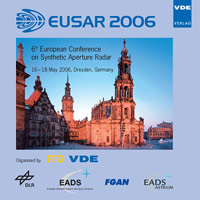Autonomous Determination of Relative Position and Flight Direction of two Airborne Radar Platforms
Conference: EUSAR 2006 - 6th European Conference on Synthetic Aperture Radar
05/16/2006 - 05/18/2006 at Dresden, Germany
Proceedings: EUSAR 2006
Pages: 4Language: englishTyp: PDF
Personal VDE Members are entitled to a 10% discount on this title
Authors:
Weiß, Matthias (FGAN-FHR/ARB, Neuenahrer Straße 20, 53343 Wachtberg, Germany)
Abstract:
Bistatic radar systems have been of interest since the earliest days of radar. Due to the progress in technology over the last years the interest in bistatic radar has grown more and more. They have the advantage that the receiver are passive, and hence undetectable. Due to the ability to deploy transmitter and receiver independently, bistatic radar may have a counter-stealth capability, in view of the fact that the target shaping is taken place for the monostatic RCS which will in general not reduce the bistatic RCS. Furthermore receiving systems are also potentially simple and cheap, since the expensive transmit/receive-modules can be eliminated. As the requirements on bistatic imaging radar systems increases continuously one has to solve several technical problems. For coherent signal processing the stable local oscillators (STALO) have to be synchronised. Furthermore to allow an automatic bi- and multistatic signal processing, the baseline between the transmitter and receiver pair, as well as the orientation towards each other must be known precisely. If these data are available in real-time an automatic adjustment of the transmit pulse versus receive gate timing, antenna pointing and correction of the flight direction can be enabled.


